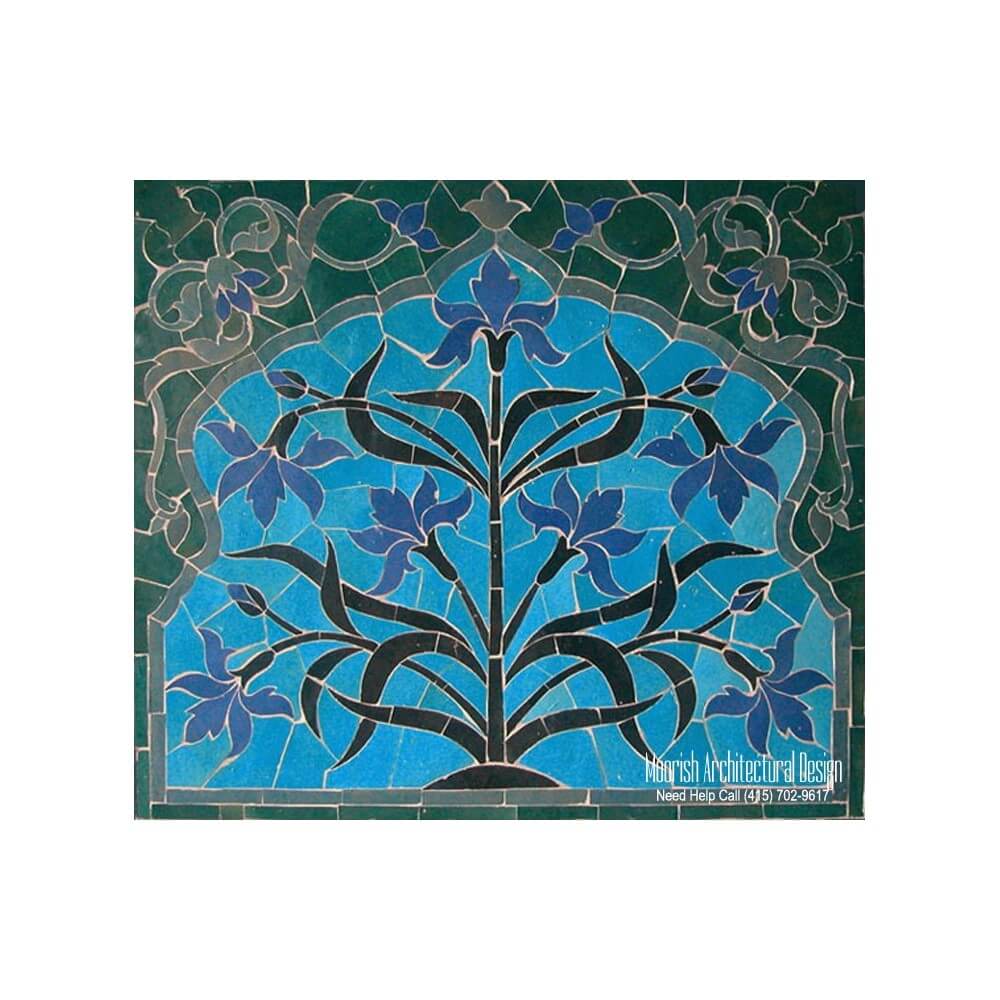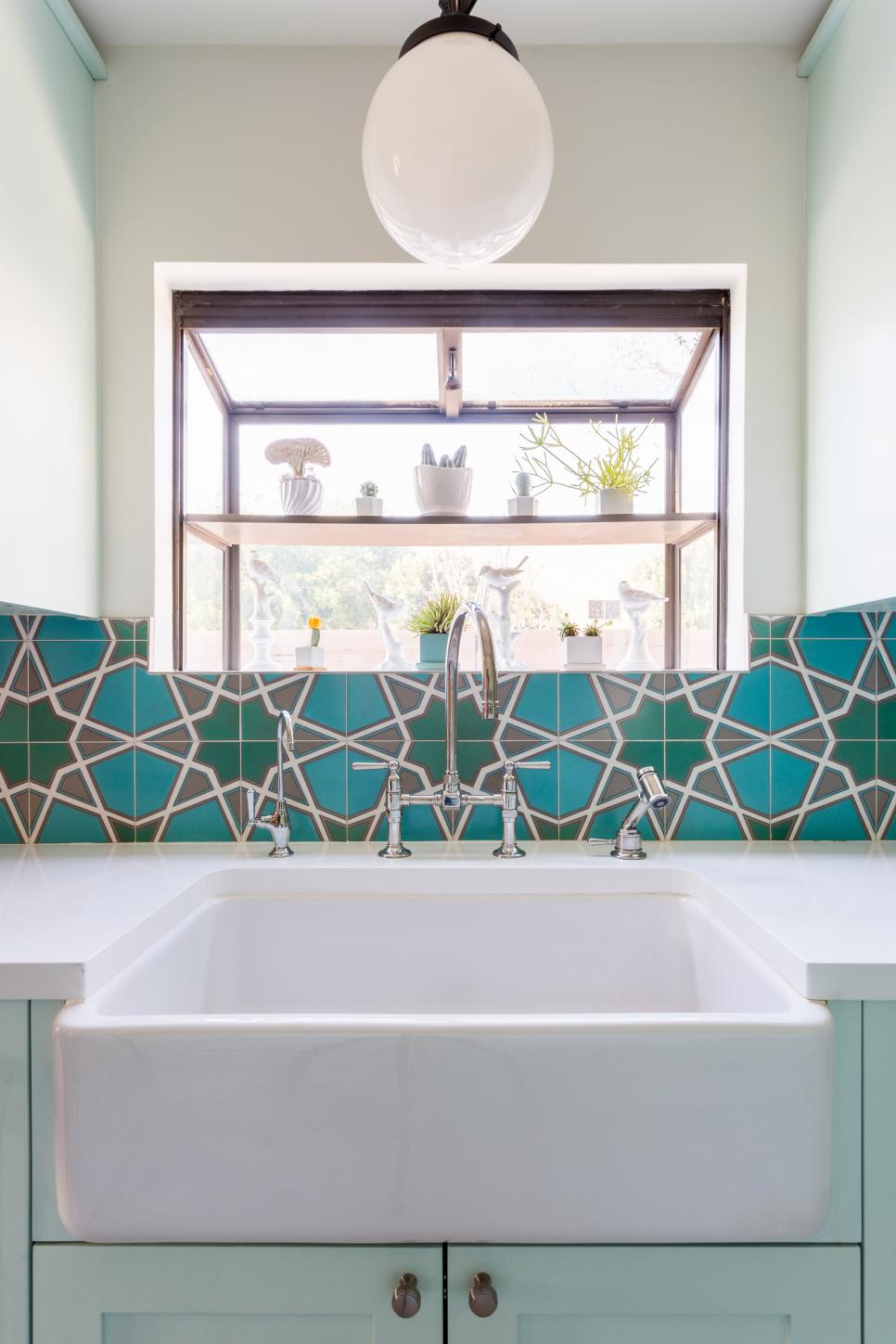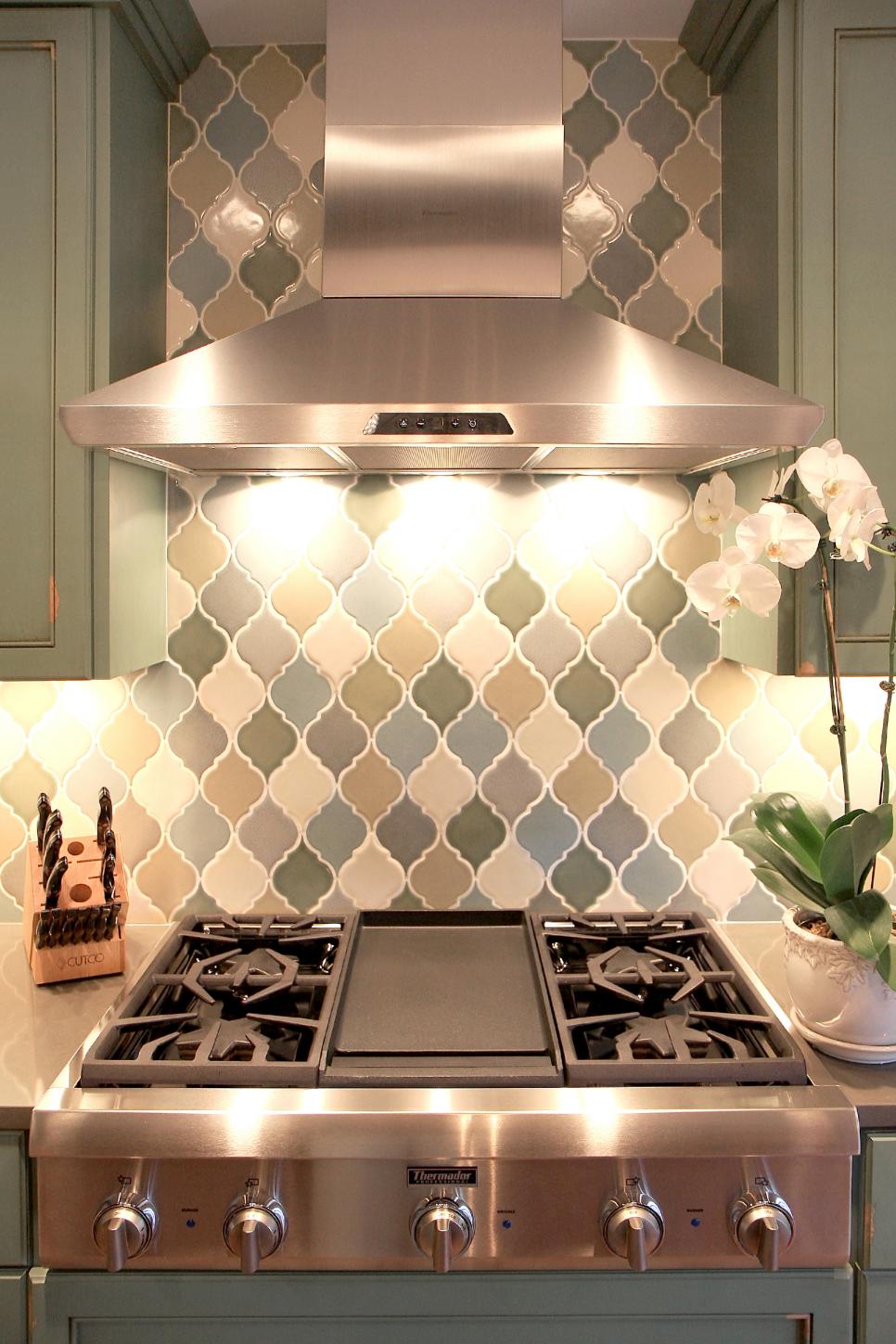A Spanish kitchen backsplash is a vibrant and charming addition to any kitchen, bringing a touch of Mediterranean warmth and rustic elegance to the space. With its rich history and diverse influences, Spanish design offers a plethora of options for creating a stunning backsplash that can serve as a focal point in your kitchen. Let’s explore various aspects of Spanish kitchen backsplashes, including materials, patterns, colors, styles, installation techniques, and maintenance tips, to help you achieve an authentic and beautiful look in your home.

Materials for Spanish Kitchen Backsplashes
Ceramic Tiles
Ceramic tiles are a popular choice for Spanish kitchen backsplashes due to their versatility, durability, and wide range of designs. These tiles can be glazed or unglazed, offering different finishes and textures to suit your design preferences. Glazed ceramic tiles are easier to clean and maintain, making them ideal for kitchen environments. They come in various colors and patterns, allowing for endless design possibilities. Ceramic tiles are also relatively affordable, making them an accessible option for homeowners seeking a Spanish-inspired kitchen.
Terracotta Tiles
Terracotta tiles are quintessential to Spanish design, bringing a rustic and earthy feel to the kitchen. Made from natural clay, these tiles have a warm, reddish-brown hue that adds depth and character to the backsplash. Terracotta tiles can be left in their natural state or glazed for added protection and ease of maintenance. They are known for their durability and ability to age gracefully, developing a unique patina over time. Terracotta tiles are perfect for creating an authentic, old-world Spanish look in your kitchen.

Talavera Tiles
Talavera tiles are handcrafted, traditional Mexican tiles that are often used in Spanish-style kitchens. These tiles are characterized by their bright colors, intricate patterns, and glossy finish. Each tile is unique, showcasing the craftsmanship and artistic heritage of Talavera pottery. Talavera tiles can be used to create vibrant and eye-catching backsplashes that become the centerpiece of the kitchen. They are typically made from a combination of clay and volcanic soil, which gives them their distinctive look and durability.
Natural Stone
Natural stone, such as marble, granite, and travertine, can also be used for Spanish kitchen backsplashes. These materials bring a touch of elegance and luxury to the kitchen while maintaining a rustic charm. Natural stone tiles come in a variety of colors and textures, allowing you to create a unique and personalized backsplash. Stone tiles are durable and resistant to heat and moisture, making them suitable for kitchen environments. However, they may require more maintenance compared to ceramic or terracotta tiles, as they can be more prone to staining and etching.

Patterns for Spanish Kitchen Backsplashes
Geometric Patterns
Geometric patterns are a staple in Spanish design, often featuring bold and intricate shapes that create a visually striking backsplash. Common geometric patterns include diamonds, hexagons, and Moorish-inspired shapes. These patterns can be created using ceramic, Talavera, or terracotta tiles, adding a sense of movement and rhythm to the kitchen. Geometric patterns can be used as an all-over design or as an accent feature, such as a central medallion or border, to draw attention to specific areas of the backsplash.
Floral and Botanical Motifs
Floral and botanical motifs are another hallmark of Spanish kitchen backsplashes. These patterns often depict stylized flowers, leaves, and vines, adding a touch of nature and organic beauty to the kitchen. Talavera tiles are particularly well-suited for floral designs, as they come in vibrant colors and intricate patterns that can create a stunning visual impact. Floral and botanical motifs can be used to create a continuous pattern across the backsplash or as individual decorative tiles interspersed with solid-colored tiles for a more subtle effect.
Arabesque Patterns
Arabesque patterns, inspired by Islamic art and architecture, are commonly found in Spanish design due to the historical influence of the Moors in Spain. These patterns feature intricate, interlacing shapes and flowing lines that create a sense of elegance and sophistication. Arabesque tiles can be used to cover the entire backsplash or as a focal point within a more understated design. The use of arabesque patterns adds a touch of exoticism and cultural richness to the kitchen, making it a unique and inviting space.
Mosaic Designs
Mosaic designs are a versatile and creative option for Spanish kitchen backsplashes. Mosaics can be made from small pieces of ceramic, glass, or natural stone, arranged to form detailed images or abstract patterns. Spanish mosaics often feature vibrant colors and intricate designs, reflecting the rich artistic heritage of the region. Mosaic backsplashes can be custom-designed to fit your specific taste and kitchen layout, allowing for a highly personalized and artistic touch. They can be used as a full backsplash or as an accent piece, such as a mural behind the stove or sink.

Color Schemes for Spanish Kitchen Backsplashes
Warm Earth Tones
Warm earth tones are a defining feature of Spanish kitchen backsplashes, creating a cozy and inviting atmosphere. Colors such as terracotta, ochre, burnt sienna, and deep reds evoke the natural landscape of Spain and its traditional architecture. These colors can be used on their own or combined with other shades to create a harmonious and balanced look. Warm earth tones are particularly effective when paired with natural materials like wood and stone, enhancing the rustic and organic feel of the kitchen.
Bright and Bold Colors
Bright and bold colors are often used in Spanish kitchen backsplashes to create a lively and festive atmosphere. Colors like cobalt blue, vibrant yellow, emerald green, and rich burgundy can be used to create a striking contrast with more neutral tones. Talavera tiles are perfect for incorporating bright and bold colors, as they are known for their vivid hues and intricate designs. Using bold colors in the backsplash can add a touch of playfulness and energy to the kitchen, making it a dynamic and engaging space.
Neutral and Pastel Shades
Neutral and pastel shades can also be used in Spanish kitchen backsplashes to create a more subdued and elegant look. Colors like soft beige, pale blue, light grey, and creamy white can provide a calming and sophisticated backdrop for the kitchen. These shades can be combined with more vibrant accents or patterns to add depth and interest without overwhelming the space. Neutral and pastel colors are ideal for creating a timeless and versatile design that can easily be updated with different accessories and decor.
Multicolored Combinations
Multicolored combinations are a hallmark of Spanish design, allowing for a rich and diverse palette that reflects the region’s vibrant culture. Combining various colors and patterns can create a visually stimulating and eclectic backsplash that becomes the focal point of the kitchen. Multicolored backsplashes can be achieved using a mix of ceramic, Talavera, and mosaic tiles, arranged in intricate patterns or random arrangements. This approach allows for creativity and personalization, resulting in a unique and dynamic kitchen design.

Styles of Spanish Kitchen Backsplashes
Traditional Spanish
Traditional Spanish style backsplashes draw inspiration from the historical and cultural heritage of Spain. This style often features terracotta tiles, hand-painted Talavera tiles, and intricate mosaic designs that reflect the rich artistic traditions of the region. The color palette typically includes warm earth tones, deep blues, and vibrant yellows, creating a warm and inviting atmosphere. Traditional Spanish backsplashes often incorporate geometric and floral patterns, as well as decorative borders and medallions, to add depth and visual interest.
Mediterranean
Mediterranean style backsplashes blend Spanish design elements with influences from other countries bordering the Mediterranean Sea, such as Italy, Greece, and Morocco. This style often features a mix of natural stone, ceramic, and glass tiles in earthy tones, blues, and greens. Mediterranean backsplashes typically incorporate organic patterns, such as vines and waves, as well as geometric and arabesque designs. The overall look is relaxed and casual, evoking the laid-back lifestyle and natural beauty of the Mediterranean region.
Rustic Farmhouse
Rustic farmhouse style backsplashes bring a touch of country charm to the kitchen, combining Spanish design elements with a cozy, rural aesthetic. This style often features terracotta tiles, distressed wood, and wrought iron accents. The color palette includes warm, earthy tones, soft whites, and muted greens and blues. Rustic farmhouse backsplashes typically incorporate simple geometric patterns, such as squares and diamonds, as well as hand-painted tiles and decorative borders. The overall look is warm, inviting, and full of character.
Modern Spanish
Modern Spanish style backsplashes blend traditional Spanish design elements with contemporary aesthetics for a fresh and updated look. This style often features clean lines, minimalistic patterns, and a more restrained color palette, such as neutrals with pops of vibrant color. Modern Spanish backsplashes can incorporate large format tiles, sleek glass tiles, and subtle geometric designs. The overall look is sophisticated and streamlined, offering a modern take on the classic Spanish aesthetic while maintaining its warmth and charm.

Installation Techniques for Spanish Kitchen Backsplashes
Preparing the Surface
Proper surface preparation is crucial for a successful backsplash installation. The wall surface should be clean, dry, and free of any debris or grease. If the wall is uneven, it may need to be sanded or patched to create a smooth surface for the tiles. Applying a primer or tile backer board can also help ensure better adhesion and durability. Proper surface preparation not only makes the installation process easier but also ensures that the tiles will stay securely in place for years to come.
Measuring and Planning
Accurate measuring and planning are essential for achieving a professional-looking backsplash. Start by measuring the area where the backsplash will be installed and calculating the number of tiles needed. It’s important to consider the layout and design, including any patterns or borders, to ensure that the tiles are placed correctly. Planning the placement of tiles, including any cut tiles, can help avoid mistakes and ensure a seamless and symmetrical design. Creating a template or drawing a guide on the wall can also be helpful during installation.
Applying Adhesive and Setting Tiles
Choosing the right adhesive and applying it correctly is crucial for a successful backsplash installation. Thin-set mortar or tile adhesive is typically used for setting tiles. Apply the adhesive to the wall using a notched trowel, spreading it evenly and working in small sections to prevent it from drying out before the tiles are set. Carefully place each tile onto the adhesive, pressing firmly and using tile spacers to maintain even gaps between tiles. Ensure that the tiles are level and aligned according to your design plan.
Grouting and Sealing
Once the tiles are set and the adhesive has cured, it’s time to apply grout to fill the gaps between tiles. Choose a grout color that complements the tile design and mix it according to the manufacturer’s instructions. Apply the grout using a grout float, pressing it into the gaps and wiping away any excess with a damp sponge. After the grout has cured, apply a grout sealer to protect it from stains and moisture. Sealing the tiles and grout helps maintain the beauty and durability of your Spanish kitchen backsplash.

Maintenance Tips
Regular Cleaning
Regular cleaning is essential to keep your Spanish kitchen backsplash looking its best. Use a mild soap solution and a soft cloth or sponge to wipe down the tiles, removing any grease, food splatters, or dust. Avoid using abrasive cleaners or scrubbers, as they can damage the tile surface and grout. For tough stains, a mixture of baking soda and water can be used to gently scrub the area. Regular cleaning not only maintains the appearance of the backsplash but also prevents the buildup of dirt and grime.
Protecting the Grout
Grout is porous and can easily absorb stains and moisture, making it important to protect it with a grout sealer. Apply a grout sealer after installation and reapply it periodically, as recommended by the manufacturer. This helps prevent stains, mold, and mildew from penetrating the grout, keeping it clean and in good condition. Regularly inspecting the grout for any signs of damage or wear and promptly addressing any issues can prolong the lifespan of your backsplash.
Addressing Damage
Despite their durability, tiles can occasionally crack or chip. It’s important to address any damage promptly to prevent it from worsening. For small cracks or chips, a tile repair kit can be used to fill in the damaged area. For larger damage, it may be necessary to replace the affected tile. Carefully remove the damaged tile and any adhesive, then set a new tile in place using tile adhesive and grout. Keeping a few extra tiles on hand from the original installation can make repairs easier.
Preventing Moisture Damage
Moisture can be detrimental to both tiles and grout, making it important to take steps to prevent moisture damage. Ensure proper ventilation in the kitchen, especially near the backsplash area, to reduce humidity levels. Fix any leaks or plumbing issues promptly to prevent water from seeping into the tiles and grout. Using a dehumidifier in the kitchen can also help control moisture levels. Preventing moisture damage not only maintains the appearance of the backsplash but also ensures its longevity.

Common Mistakes to Avoid
Overcomplicating the Design
While intricate designs can be beautiful, overcomplicating the backsplash with too many patterns and colors can make the kitchen look cluttered and overwhelming. It’s important to strike a balance between visual interest and simplicity to create a cohesive and harmonious look. Consider using bold patterns or colors as accents rather than covering the entire backsplash.
Using Inappropriate Materials
Choosing the wrong materials for your backsplash can lead to problems with durability and maintenance. It’s important to select tiles that are suitable for kitchen environments, such as ceramic, terracotta, or natural stone. Avoid using tiles that are too porous or difficult to clean, as they may not hold up well in a busy kitchen.
Skipping Proper Surface Preparation
Skipping proper surface preparation can lead to issues with tile adhesion and durability. It’s crucial to clean, smooth, and prime the wall surface before installing tiles. Neglecting this step can result in tiles falling off or uneven surfaces, compromising the overall look and longevity of the backsplash.
Not Sealing the Grout
Failing to seal the grout can lead to stains, mold, and moisture damage. It’s important to apply a grout sealer after installation and reapply it periodically to protect the grout from dirt and moisture. Properly sealed grout maintains its appearance and durability, ensuring a long-lasting backsplash.
Ignoring Maintenance
Neglecting regular maintenance can lead to a dull and dirty backsplash. Regular cleaning, protecting the grout, and addressing any damage promptly are essential to keeping your Spanish kitchen backsplash looking its best. Ignoring maintenance can result in a backsplash that loses its charm and appeal over time.

What are the best materials for a Spanish kitchen backsplash?
The best materials for a Spanish kitchen backsplash include ceramic tiles, terracotta tiles, Talavera tiles, and natural stone. Ceramic tiles offer versatility and durability, terracotta tiles bring a rustic and earthy feel, Talavera tiles add vibrant colors and intricate patterns, and natural stone offers elegance and luxury.
How do I choose the right color scheme for my Spanish kitchen backsplash?
Choosing the right color scheme involves considering the overall design and color palette of your kitchen. Warm earth tones create a cozy and inviting atmosphere, bright and bold colors add energy and vibrancy, neutral and pastel shades provide a calm and sophisticated backdrop, and multicolored combinations offer a rich and eclectic look. Select colors that complement your kitchen decor and personal style.
Can I install a Spanish kitchen backsplash myself?
Yes, you can install a Spanish kitchen backsplash yourself with proper planning and preparation. Ensure that the wall surface is clean and smooth, measure and plan the layout, apply the adhesive correctly, and set the tiles carefully. Follow up with grouting and sealing to protect the tiles and grout. If you’re not confident in your DIY skills, consider hiring a professional for the best results.
How do I maintain my Spanish kitchen backsplash?
Maintain your Spanish kitchen backsplash by regularly cleaning it with a mild soap solution and soft cloth, protecting the grout with a sealer, addressing any damage promptly, and preventing moisture damage by ensuring proper ventilation and fixing any leaks. Regular maintenance keeps the backsplash looking beautiful and extends its lifespan.
Are Spanish kitchen backsplashes expensive?
The cost of a Spanish kitchen backsplash can vary depending on the materials and complexity of the design. Ceramic tiles are generally affordable, while terracotta, Talavera, and natural stone tiles can be more expensive. Custom mosaic designs and intricate patterns may also increase the cost. However, the investment can add significant aesthetics and value to your kitchen.
Kitchen Styles

united states travertine tile patterns kitchen traditional with pendant lights

Related Posts:
- Painted Kitchen Backsplash Designs
- Custom Kitchen Backsplash Tiles
- Awesome Kitchen Backsplashes
- How To Re Tile Kitchen Backsplash
- Small Kitchen Backsplash Design
- Cheap Kitchen Backsplash Ideas Pictures
- Self Adhesive Kitchen Backsplash Tiles
- Dark Gray Kitchen Backsplash
- Kitchen Backsplash Alternatives
- Cheap Glass Tiles For Kitchen Backsplashes